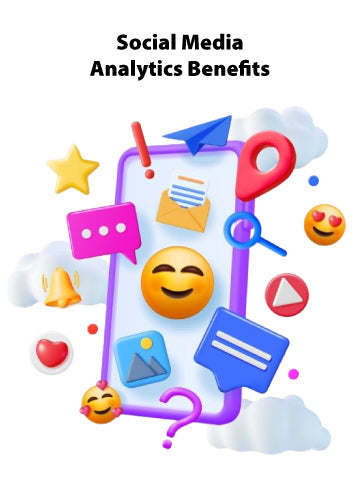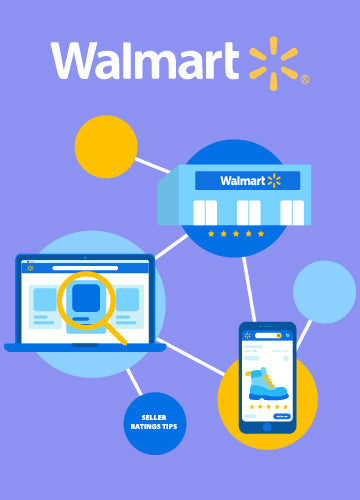In today's digital age, social media platforms have become indispensable tools for businesses to reach their target audience. Among these platforms, Facebook stands out as a powerful advertising platform that offers a plethora of targeting options. Understanding these options and how to use them effectively can significantly boost the performance of your Facebook ads. Let's dive into the world of Facebook Ads targeting options and explore how you can leverage them to maximize your reach and impact.
1. Demographic Targeting
Facebook allows you to target users based on various demographic factors such as age, gender, education, job title, and relationship status. This type of targeting is particularly useful when your product or service caters to a specific demographic. For example, if you're promoting a retirement planning service, you can target users who are nearing retirement age.
2. Location Targeting
Location targeting allows you to target users based on their location, including countries, regions, cities, and even specific addresses. This is useful for businesses that operate in specific geographical areas or want to target users in a particular location. For example, a local restaurant can target users within a 5-mile radius to promote a special offer.
3. Interest Targeting
Interest targeting allows you to target users based on their interests, hobbies, and activities. Facebook gathers this information from users' interactions on the platform, such as pages they like and posts they engage with. This type of targeting is beneficial for businesses offering products or services that align with specific interests. For example, a travel agency can target users interested in travel.
4. Behavior Targeting
Behavior targeting allows you to target users based on their behavior on and off Facebook. This includes purchase behavior, device usage, travel behavior, and more. This type of targeting is useful for businesses looking to target users based on their specific behaviors. For example, an electronics retailer can target users who have recently purchased electronics online.
5. Custom Audiences
Custom audiences allow you to target users who have already interacted with your business, such as website visitors, app users, or customers. This type of targeting is beneficial for retargeting campaigns, where you can reach users who have shown interest in your products or services but haven't made a purchase yet. For example, an online retailer can target users who have added items to their cart but haven't checked out.
6. Lookalike Audiences
Lookalike audiences allow you to reach new users who are similar to your existing customers or audience. Facebook analyzes the characteristics of your custom audience and finds users who share similar traits. This type of targeting is useful for expanding your reach to new users who are likely to be interested in your business. For example, a subscription box service can create a lookalike audience based on their existing subscribers to attract new subscribers.
7. Ad Placement Targeting
Facebook offers various ad placements, including News Feed, Stories, and Audience Network. Ad placement targeting allows you to choose where your ads appear, ensuring that they are seen by your target audience. For example, if you're targeting a younger audience, you might choose to place your ads in Stories, where younger users are more active.
8. Detailed Targeting
Detailed targeting allows you to combine multiple targeting options to create a highly specific audience. For example, you can target users who are women, aged 25-34, interested in yoga, and live in Los Angeles. This type of targeting is beneficial for businesses with niche products or services.
9. Engagement Targeting
Engagement targeting allows you to target users who have interacted with your content on Facebook or Instagram. This includes users who have liked, commented on, or shared your posts, as well as those who have interacted with your ads. Targeting these users can help you re-engage with them and encourage further interaction with your brand.
10. Connection Targeting
Connection targeting allows you to target users who have a specific connection to your Facebook Page, app, or event. This includes users who are connected to your Page as fans, users who have used your app, or users who have RSVPed to your event. Targeting these users can help you deepen your relationship with them and encourage further engagement.
11. Life Events Targeting
Life events targeting allows you to target users who are going through specific life events, such as getting married, moving, or starting a new job. Facebook gathers this information from users' profiles and interactions. This type of targeting is useful for businesses offering products or services related to these life events. For example, a furniture store can target users who have recently moved.
12. Language Targeting
Language targeting allows you to target users based on the languages they speak. This is useful for businesses operating in multilingual regions or looking to target specific language-speaking audiences. For example, a language learning app can target users who speak Spanish.
13. Exclude Targeting
Exclude targeting allows you to exclude certain audiences from seeing your ads. This can be useful if you want to avoid showing your ads to users who have already purchased your product or service, or to users who are unlikely to be interested in your offer. For example, an e-commerce store can exclude users who have already made a purchase.
14. Time-Based Targeting
Time-based targeting allows you to target users based on specific times or days of the week. This can be useful for businesses running promotions or events that are time-sensitive. For example, a restaurant can target users during lunchtime with a special lunch menu offer.
15. Budget Optimization
Facebook offers budget optimization, which allows you to allocate your budget to the best-performing ad sets automatically. This helps you maximize your budget and achieve better results with your Facebook Ads campaigns.
16. Engagement Targeting
Engagement targeting allows you to target users who have interacted with your content on Facebook or Instagram. This includes users who have liked, commented on, or shared your posts, as well as those who have interacted with your ads. Targeting these users can help you re-engage with them and encourage further interaction with your brand.
17. Connection Targeting
Connection targeting allows you to target users who have a specific connection to your Facebook Page, app, or event. This includes users who are connected to your Page as fans, users who have used your app, or users who have RSVPed to your event. Targeting these users can help you deepen your relationship with them and encourage further engagement.
18. Life Events Targeting
Life events targeting allows you to target users who are going through specific life events, such as getting married, moving, or starting a new job. Facebook gathers this information from users' profiles and interactions. This type of targeting is useful for businesses offering products or services related to these life events. For example, a furniture store can target users who have recently moved.
19. Language Targeting
Language targeting allows you to target users based on the languages they speak. This is useful for businesses operating in multilingual regions or looking to target specific language-speaking audiences. For example, a language learning app can target users who speak Spanish.
20. Exclude Targeting
Exclude targeting allows you to exclude certain audiences from seeing your ads. This can be useful if you want to avoid showing your ads to users who have already purchased your product or service, or to users who are unlikely to be interested in your offer. For example, an e-commerce store can exclude users who have already made a purchase.
21. Time-Based Targeting
Time-based targeting allows you to target users based on specific times or days of the week. This can be useful for businesses running promotions or events that are time-sensitive. For example, a restaurant can target users during lunchtime with a special lunch menu offer.
22. Budget Optimization
Facebook offers budget optimization, which allows you to allocate your budget to the best-performing ad sets automatically. This helps you maximize your budget and achieve better results with your Facebook Ads campaigns.
The Verdict
In conclusion, Facebook Ads targeting options offer a wide range of possibilities for businesses looking to reach their target audience effectively. By understanding and utilizing these options, you can create highly targeted campaigns that resonate with your audience and drive results for your business. So, don't hesitate to explore and experiment with different targeting options to find what works best for your business.


